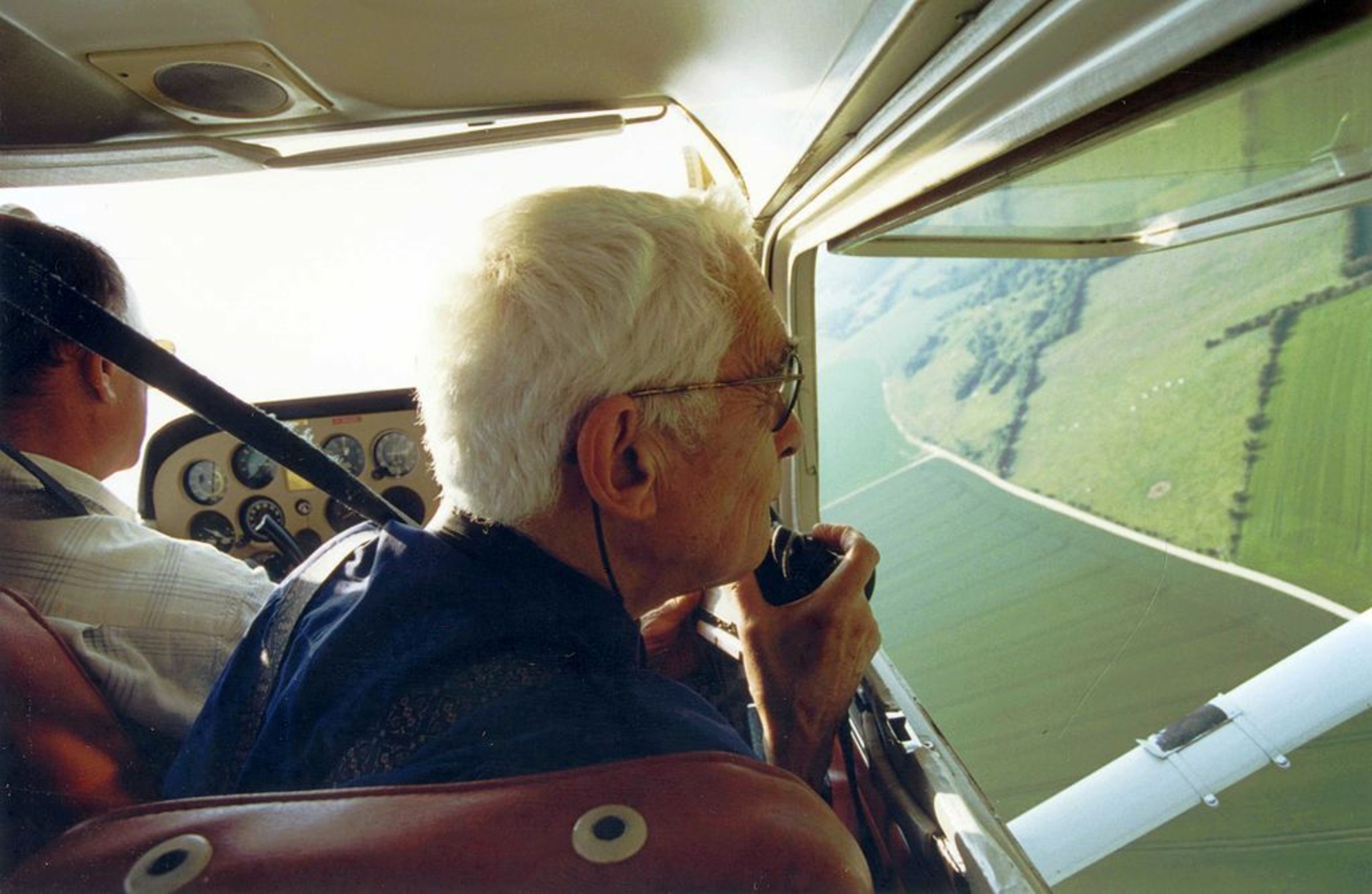- Home
- What is aerial archaeology ?
- Portrait of Roger Agache
- International recognition
Flying a Piper Cub in 1963.
In 1962, Roger Agache published a brochure entitled Vues aériennes de la Somme et recherches de son passé, with 93 illustrations. It was the first publication of its kind in France, and was widely distributed thanks to an international conference organized by Raymond Chevallier (Paris, 1963), who gave him a significant share of the exhibition and featured him in the catalogue. The top international specialists were excited by these photographs that had been obtained with such simple means.
Irwin Scollar and John Kenneth Saint-Joseph immediately became close friends, and gave him access to the major international periodicals, which began to publish Agache's work starting in 1964. J. K. Saint-Joseph had made several flights in the north of France in the summer of 1961, and had published his observations in Antiquity in 1962. He did not hide his disappointment — the widespread presence of fertile areas of silt on the plateaus made prospecting more difficult than in England. Indeed, anomalies in crop growth in northern France were much less apparent than in the poorer soils across the Channel.
Farmers, whom Roger Agache always visited — to his benefit — told him that in wintertime spots and lines appeared in their fields. During the winter of 1963–64, he flew more and more, despite the turbulence, which he very much disliked! Two pilot friends were killed. A failed engine and, above all, an in-flight fire terrified him, but he persisted.
The results of these winter flyovers exceeded every expectation, both in terms of the number of discoveries as well as the precision — unheard-of until then — of the photographs in depicting the layouts of large Gallo-Roman villas whose existence had been heretofore unknown.
Roger Agache next to his biplane in 1963.
His publications in international scientific journals soon made him internationally famous, which was confirmed by his important summary that was published in 1970 — British academics such as Glyn Daniel were quick to hail it as a classic, on the same level as Crawford — and by the widespread distribution of a series of slides by the National Pedagogic Institute.


